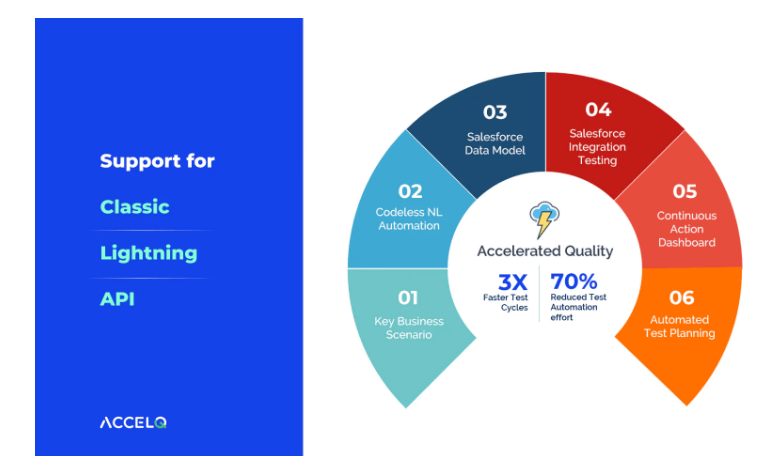
Software testing is much more than finding and reporting bugs and errors.
So, let's get started.
What Is Software Testing?

Software testing is a crucial step in any application development. It ensures that the delivered product is free from all bugs. But that's not all. Testing or Quality Assurance (QA) is also about ensuring that the product serves its customer's requirements and performs as expected.
To put it simply, software testing also means verifying and validating the application under test (or AUT). Software testing is either:
- Manual, where a team of QA professionals is employed to find and report bugs
- Automated, which involves the use of automation tools with minimum human intervention
Next, we shall discuss why software testing is important to application development companies.
Why Is Software Testing Important?
In any product-based organization, software testing is important for detecting and fixing software bugs early in the software development cycle. This ensures that the end customer does not receive a defective product. Testing is crucial as software bugs can potentially cause loss of business and reputation to the organizations that purchase the application.
To that end, here are the primary reasons to include software testing as part of application development:
- Enables the early detection and resolution of software issues before they escalate.
- Enhances the application development work by providing immediate feedback.
- Monitors the overall performance of the delivered application.
- Improves overall product quality by reducing the number of product defects and vulnerabilities.
- Enhances both customer satisfaction and loyalty by delivering high-quality products.
- Minimizes the effects of cyberattacks by detecting any security-related vulnerability.
- Reduces both development costs and efforts through a continuous feedback cycle.
How do product companies get better at software testing? Let's discuss some practical ways in the next section.
Ready to Get Started?
Let our team experts walk you through how ACCELQ can assist you in achieving a true continuous testing automation
6 Practical Ways to Improve Software Testing

Most product companies find it challenging to realize high-quality software testing. Here are six easy and practical steps to improve the testing process:
1. Focus Testing on the End User
Testing does not begin or end by focusing on software bugs. To improve the effectiveness of testing, focus it on the end user or the customer.
Modern-day testing is all about fulfilling customer requirements and solving their pain points. Most QA teams focus on testing product features without knowing why they are useful to the end user.
To achieve this objective, focus on creating a quality management plan that:
- Determines the acceptable level of product quality.
- States how to achieve this objective through QA testing.
- Addresses the customer’s needs and expectations of the product.
2. Plan the Testing Process
To improve testing, companies must plan, define, and document their testing process. QA documents are effective for nurturing communication with the rest of the development team. In essence, the purpose of efficient planning is to create high-quality test cases for the application.
Here are some of the main documents required for test planning:
- Test policy is a management-level document that defines the test principles and objectives adopted by the organization.
- Test strategy is a product-specific document prepared from the business requirements specifications. Mostly, project managers or business analysts prepare this document.
- Test plans provide the details of what, when, how, and why to perform the tests.
- Test cases provide the set of inputs, pre-conditions, expected results, and post-conditions used to achieve a specific objective.
SUGGESTED READ - Understanding the differences between test strategy and test plan
3. Adopt a Shift-Left Approach
Traditionally, testing was the final step in product development before releasing the product in the market. This is no longer feasible in the age of continuous improvement and development.
A shift-left approach means testing from the start of the software development cycle. This approach ensures that both QA testers and developers have sufficient time to address bugs and product improvements.
Here is what shift-left testing entails:
- Creating a test strategy early during product development to detect and resolve bugs.
- Reviewing and analyzing customer requirements at the beginning of the software cycle.
- Performing smaller testing across the entire SDLC for immediate and continued product validation.
- Focusing on preventing any product issues rather than reacting to them.
4. Implement User Acceptance Testing
In the traditional mode, user acceptance (or end-user) testing was performed in the final stages of product development. This is no longer sufficient. User acceptance testing (or UAT) enables product companies to determine the market readiness of their product and measure the performance when used by customers. Furthermore, end users can help discover product flaws when used in real-world scenarios.
For implementing effective UAT, QA professionals create "user personas" to identify when and where to look for defects. Alpha and Beta testing are among the common types of UAT. Alpha tests are executed in the internal development environment using internal users. Beta testing is performed later in the customer's environment to check if the product is ready for use.
5. Optimize Automation Testing
Automation testing is the best way to improve software testing and deliver high-quality products. The 2020 World Quality Report rated test automation among the top 3 trends in QA practices.
Automated testing can reduce human efforts, save time, and minimize human errors. It applies to a variety of testing techniques, including cross-browser, regression, load & stress, and performance testing. Moreover, automation testing is easy to implement in any Agile and DevOps environment.
6. Ensure Clarity in QA Reporting
An efficient QA report listing all software bugs or issues can improve the quality of any software testing process. Therefore, it is important to ensure that every QA report is clear and highlights the problem to the development team. Because, poor QA reports can create misunderstandings between the development and QA team and lead to bad software quality.
Here are some guidelines for ensuring clarity in QA reports:
- Provide stepwise instructions on how to reproduce the bug.
- Provide a plausible solution to the identified problem or describe the expected behavior of a product feature.
- Define the problem clearly for the developers to understand and address their failure.
- Provide sufficient screenshots of the software to highlight the problem.
How ACCELQ Can Help in Improving Software Testing

Powered by Artificial Intelligence, ACCELQ provides a cloud-based codeless test automation platform that can elevate the quality of your QA process. ACCELQ provides its customers with an intelligent and intuitive testing platform that can help in:
- Building effective test cases
- Ensuring continuous development and integration
- Improving QA reporting
Reach out to us for a free demo today.
Related Posts
 Role of Low code/No-code in Digital transformation
Role of Low code/No-code in Digital transformation
Role of Low code/No-code in Digital transformation
 Step-by-Step Guide: Mobile App Testing Process
Step-by-Step Guide: Mobile App Testing Process


































